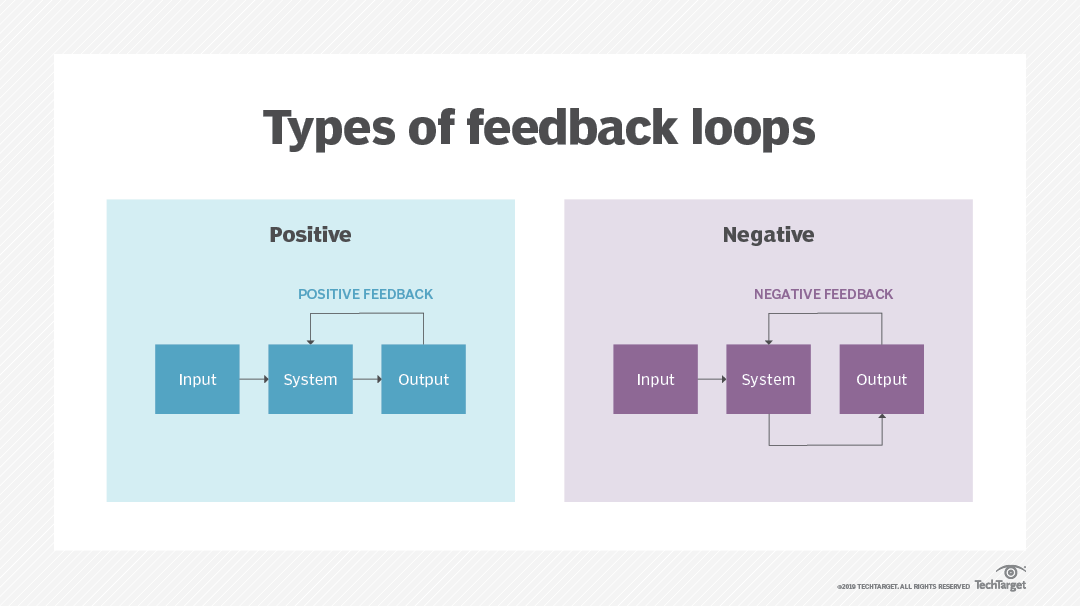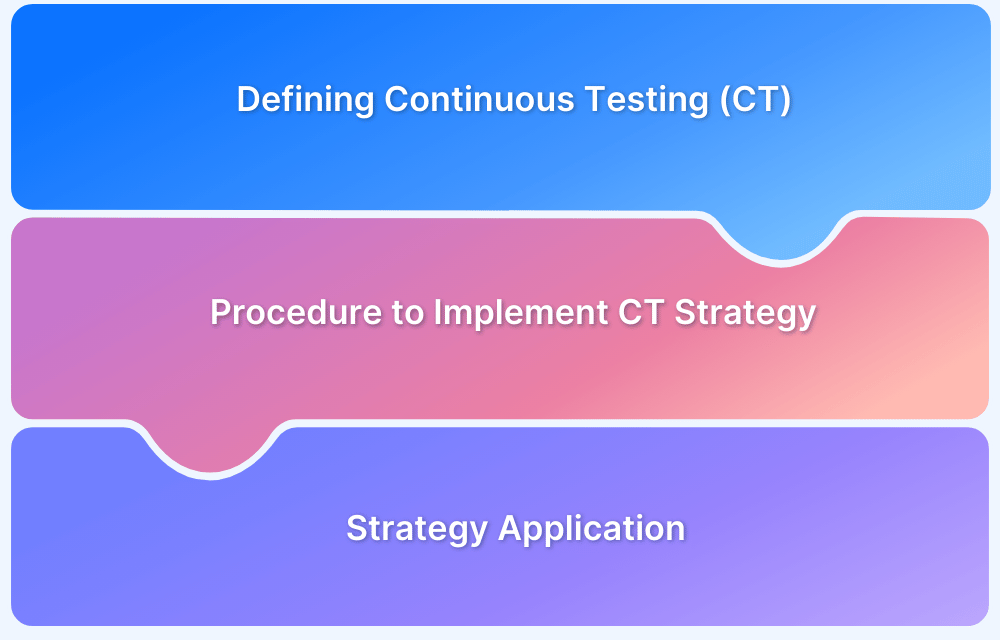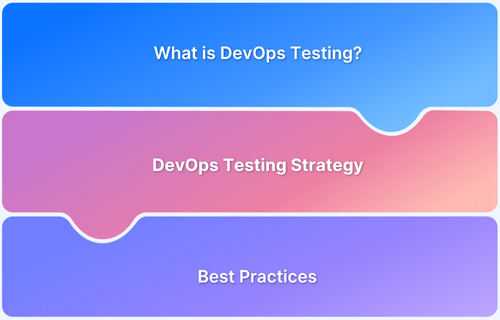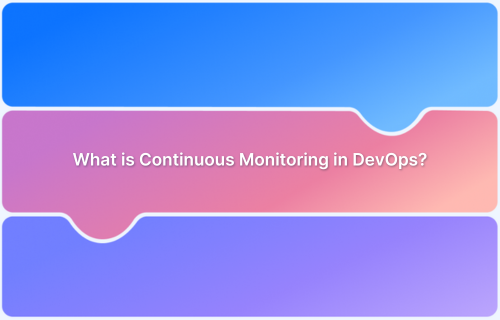A DevOps feedback loop is the process of sending outputs back as inputs across the software development lifecycle to improve speed, quality, and collaboration. Optimizing these loops helps teams detect issues early, reduce bottlenecks, and deliver reliable software faster.
Overview
1. What is a DevOps Feedback Loop and Its Types
- A system where outputs feed into inputs to enhance processes.
- Ensures developers and operations exchange insights continuously.
- Types of loops:
- Reinforcing (positive): Amplifies successful outcomes (e.g., smooth deployments).
- Balancing (negative): Slows down processes to address bugs before release.
2. Why Tightening the DevOps Feedback Loop is Essential
- Provides faster feedback on code changes.
- Helps detect and fix issues early, reducing risks.
- Saves time and effort by avoiding late-stage rework.
- Encourages collaboration through small, incremental updates and automated deployments.
3. Role of CI/CD in Improving Feedback Loops
- Continuous Integration (CI): Regularly builds and tests small code batches to prevent integration issues.
- Continuous Delivery (CD): Automates deployments, enabling faster delivery and quicker user feedback.
- Together, CI/CD reduces loop time, accelerates feedback, and improves overall software quality.
4. Best Practices to Optimize DevOps Feedback Loops
- Identify and refine existing feedback loops.
- Automate feedback collection and testing for efficiency.
- Use collaboration and testing tools (e.g., Jira, Slack, BrowserStack) to close feedback gaps.
- Invest in continuous testing on real devices to detect bugs early and release high-quality software.
This article explains what a DevOps feedback loop is, its types, why tightening it is critical, the role of CI/CD in shortening feedback cycles, and best practices for creating efficient loops.
What Is Feedback Loop in Software Development?
The term feedback loop means a system in which the outputs are fed back into the inputs to improve the process or product while adjusting the effects produced later. Feedback loops are collections of relationships between entities in which changing one entity causes a change in another, which causes a change in the first entity.
They help in internal assessments of how teams, systems, and users work to deliver the best software development results. It creates a streamlined software development flow that helps in removing bottlenecks and ensures your teams reach higher efficiency to deliver quick deployment results. They work great and positively impact the development and operational teams’ collaboration efforts.
Also Read: 5 DevOps Tools Every Team Must Have
What is a DevOps feedback loop?
Feedback loops in DevOps are critical because they help improve software development quality. They also ensure that the development, testing, and deployment results are delivered on time.
Considering the DevOps team as an example of a feedback loop, the developers build the software and give it to the operations team. The operations team tests the software and finds the errors that the development team must fix. The feedback loops back once the developers implement the changes and deliver the updates to the operational team.
Within the software lifecycle, there are two types of feedback loops, i.e., reinforcing and balancing
Also Read: What is Continuous Monitoring in DevOps?
Types of DevOps Feedback Loops
Based on the purpose of the feedback loops, you can choose a feedback loop for your DevOps process. Here are two types of feedback loops:
- Reinforcing feedback loop (positive)
Reinforcing or amplifying feedback loop is a positive loop where the output amplifies the input. The changes in the feedback loop go in one direction, which increases the overall magnitude. The focus on the loop is to boost up the process. For example, once the development team codes good quality software, the operations team can deploy the code to production with no issues.
- Balancing Feedback Loop (negative)
The balancing feedback loop is a negative loop where the output reduces the input. It works between the development and operations teams and slows down the process to bring the system back to equilibrium. For example, once the development team codes software and the production team spots a few bugs, it is not deployed to production. The process is revised, the developer fixes the bugs, and the code is committed again. Irrespective of the feedback loop type, focus on tightening or closing the feedback loop to improve software development and delivery quality.
Also Read: The Role of QA in DevOps
Why should DevOps be involved in Tightening the Feedback Loop?
It’s highly important to get quick feedback about the changes because of the tight feedback loop. Your team can identify the issues early, and the developers can fix them accordingly. Also, short feedback loops can improve the quality of feedback and help you save your team’s time and effort in the long run.
But how to tighten the feedback loop?
- Collaborative coding is an effective method for closing feedback loops. When people collaborate, the feedback they give each other is immediate and easy to apply.
- Also, to tighten feedback loops, you can work in small increments. Make your tasks or user stories small, preferably in vertical slices where each story adds value.
- Avoid horizontal slices, like “creating the database schema,” because they don’t provide value on their own. Then place those small slices into production.
- When deployments are automated, they become faster and less error-prone. Then you can put your code and features into testing and production environments to get various types of feedback.
- Some teams even perform continuous deployments. Decoupling your deployments from your releases enables you to deploy more frequently and receive feedback more frequently.
- Besides tightening the feedback loops, continuous integration and delivery processes can significantly optimize the DevOps feedback loop.
Read More: DevOps Prerequisites
Role of CI/CD in Feedback Loops
Continuous integration (CI) is regularly building packaging and testing software. Development teams work on tiny batches of code and upload them to a central repository for deployment regularly. Continuous delivery (CD) is a method of automatically pushing code changes to various environments. It’s a simple way to deliver changes and updates to developers and users.
CI/CD helps reduce the feedback loop by automating the SDLC. The code changes made by the development team are integrated into the main branch in continuous integration. It helps to remove the integration issues during the code changes. On the other hand, CD helps deliver the changes to the end-users frequently. It helps in getting feedback regarding the changes from the end-users quickly. Although CI/CD can help boost the quality of feedback, there are multiple other top practices you must use to create DevOps feedback loops for desired results.
Best Practices in Creating DevOps Feedback Loops
Multiple practices can be followed to create optimized feedback loops, but we have selected the best.
- Uncover existing feedback loops: The most important step to creating an optimized feedback loop is to select the relevant type of feedback loop. Then you should focus on existing feedback loops in your organization that need to be fixed and figure out ways to use them effectively.
- Automate the feedback loop: Adding automation to your feedback loop can help you improve the efficiency of the process. It ensures you achieve your desired level of productivity and software development results.
- Use the right tools: Multiple tools are available for DevOps feedback loops, but a few are suitable for your organization. Choose the right tools like Jira, Slack, HipChat, and BrowserStack, among others, to improve the efficiency of the feedback loop.
To release high-quality software within restricted timelines, it is necessary for DevOps teams to invest in Continuous Testing. DevOps teams should also invest in the continuous testing phase of the DevOps workflow to release flawless software. It helps tighten the feedback loop as the code is analyzed and rendered bug-free in the early stages to minimize the issues showing up closer to or in the production stage.
Also Read: Why DevOps Teams Need Cloud-Based Solutions
You can achieve comprehensive testing using BrowserStack Automate, which help you get accurate results using real browsers and devices on a cloud Selenium grid. The tool offers you 3000+ real browsers, devices, and DevOps-aligned features like:
- Instant testing on real devices
- Parallel testing
- Integrations with popular frameworks and languages via CI plugins
- Extensive range of debugging tools
- Uncompromising security with SOC2 and GDPR compliance







